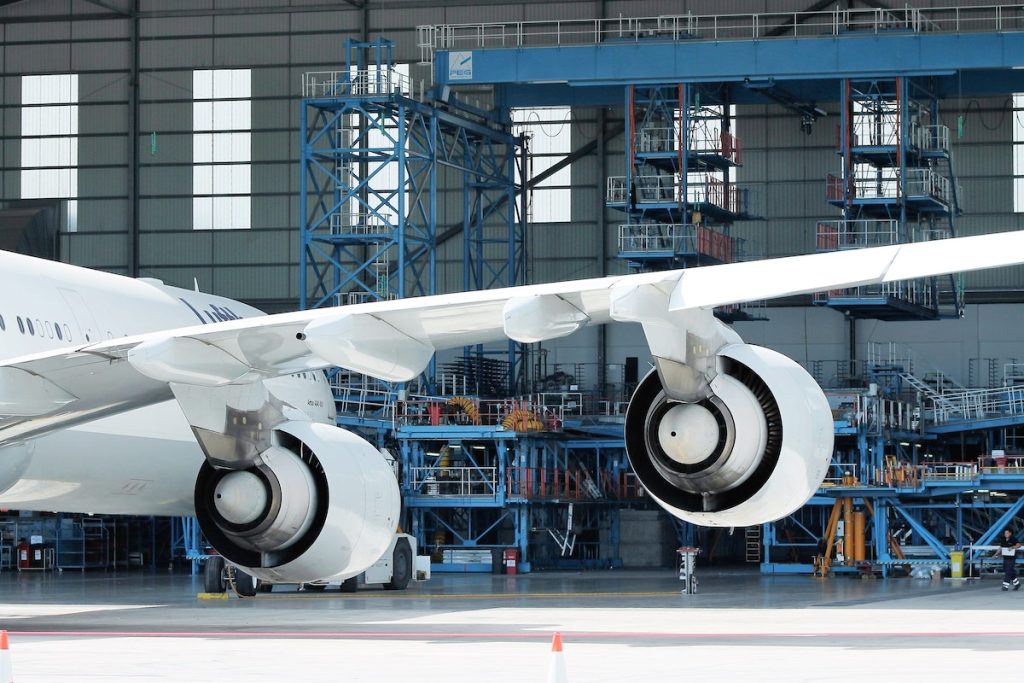- Aircraft damages can be costly and time-consuming, but technology can help mitigate them.
- Weather events such as thunderstorms, tornadoes, and hailstorms are dangerous for aircraft, but sensors can provide essential real-time data.
- Bird strikes are common, but avian radar systems use sound waves to help detect birds up to 1 km away.
- Foreign object debris (FOD) can cause damage to aircraft engines, and sensors mounted around the engine compartment can detect it early.
- Collisions can cause extensive damage, but collision avoidance systems monitor an airplane’s position in relation to nearby traffic.
If you are an aircraft manager or owner, chances are you’ve dealt with aircraft damage at some point in your career. Aircraft damage can be costly, time-consuming, and even dangerous. In this blog, you will learn about a few common types of damage to aircraft and how technology can help mitigate them.
Damage from Weather Events
Severe weather events such as thunderstorms, tornadoes, and hailstorms can cause significant damage to an aircraft’s exterior or engines if it is not properly protected or monitored during a storm event. Technology such as sensors placed around the plane or inside its engine compartment can provide real-time data related to wind speed, temperature changes, barometric pressure changes, and other atmospheric conditions, so pilots know when to take evasive action or power down their aircraft until the storm passes.
Damage from Bird Strike

Bird strikes occur when a bird collides with part of an aircraft while it’s in flight and can cause significant structural damage depending on the size of the bird and the speed at which it impacts the plane. Aircraft owners should consider investing in avian radar systems that use sound waves to detect birds up to 1 km away from an airplane’s flight path so pilots have enough time to adjust their course accordingly if necessary.
Additionally, sensor systems mounted on walls near airports may be able to help alert pilots if flocks of birds begin congregating near runways. This lets them know not to take off until all birds have cleared the area safely.
Damage from Foreign Object Debris (FOD)
Foreign object debris (FOD) is any object that enters or comes into contact with an aircraft engine. It can cause a lot of damage if left unchecked. One way to detect this type of damage early on is to use sensors mounted around the engine compartment that is designed to detect FOD entering the space. Additionally, some airports have implemented runway monitoring systems that detect when FOD is present on the runway and alert aircraft managers so they can take steps to minimize the risk of an aircraft being damaged by it.
Damage from Collisions
Collisions with other aircraft or hard objects can cause extensive damage to an airplane. To help prevent this type of accident, several companies have developed aircraft collision avoidance systems (ACAS) that make use of GPS, radar, and other technologies to monitor an airplane’s position in relation to nearby traffic and automatically alert pilots if a potential collision situation is detected. This type of system can provide the crucial seconds needed for a pilot to take evasive action and prevent an accident from occurring.
Damage from Poor Maintenance

Poor maintenance is a common cause of aircraft damage. This type of damage can range from minor issues, such as corrosion on the wings, to more severe problems, such as engine failure due to lack of lubrication.
Fortunately, several technologies are available that can help managers ensure proper maintenance schedules are followed and that any potential issues are addressed before they become a problem. For example, predictive analytics software can detect patterns in data points related to maintenance and alert managers when something needs attention. This reduces the chance of significant breakdowns due to poor maintenance practices.
You should also have the proper ground support equipment (GSEs) to service your aircraft and keep it in top condition. You must invest in these GSEs:
Aircraft jacks
Aircraft jacks are used to lift the entire aircraft off the ground so maintenance personnel can work on its undercarriage. Aircraft jacks come in a variety of sizes to accommodate different types and sizes of aircraft.
Aircraft stands
These allow you to raise one end of the aircraft above the other, making it easier to access components like landing gear and brakes.
Fuel service equipment
This type of GSE is necessary for refueling your aircraft, as well as draining, filtering, and treating fuel tanks.
Engine test equipment
This type of GSE is used to inspect the performance of aircraft engines, such as checking for any blockages or abnormalities in their performance.
Aircraft damage can be costly, from weather events to poor maintenance. Fortunately, several technologies are available that can help you detect potential issues early on and mitigate the risk of further damage or an accident. Investing in these technologies ensures your aircraft remains safe and operational.
With a combination of preventive measures such as predictive analytics software and avian radar systems plus proper GSEs, you should be able to keep your aircraft running smoothly while also reducing any downtime due to unexpected repairs or replacements.
